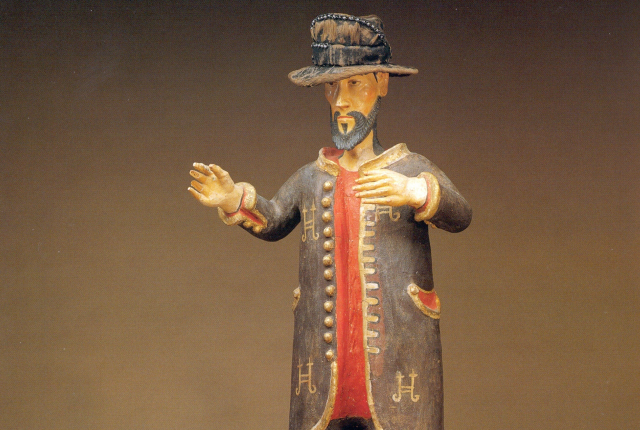SEPARATED FROM THEIR NEAREST SUPPLY points in Mexico, Spanish colonial–era artists in New Mexico made do with the materials they found here. Cottonwood branches and roots became bultos, or statues. Pigments derived from rocks and insects turned into paint for retablos, the flat paintings of saints. Animal hides served as canvas. Those creative colonists gave birth to an artform that was unique to the Southwest—and that still thrives today.
At the Museum of Spanish Colonial Art, in Santa Fe, visitors can see some of the finest examples of santero art from its earliest heyday—1760 to about 1840—along with contemporary works.
Located on Museum Hill, in a building designed by John Gaw Meem, the museum features the exhibition Trails, Rails and Highways: How Trade Transformed the Art of Spanish New Mexico, through August 2023. Included in it are stellar examples of santero art, says curator Jana Gottshalk.
“One of the things to look for when you come to the exhibit are the different ways that artists portray the same saints,” she says. Her favorite pairing is St. Isidore the Farmer, a mid-19th-century bulto by an artist known only as the Mesilla Valley Santero, and Saint Isidore, a 1996 painting by Belarmino Esquibel. “They each identify the saint in ways that are important to them, and you see those different sorts of interpretations throughout the ages.”
Read more: In Córdova, a trio of santeros helped refresh a collection of precious masterpieces.


